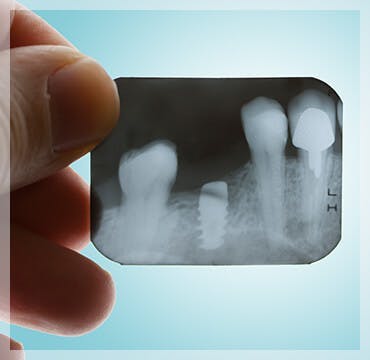The Benefits of an Alcohol-Free Mouthwash
Mouthwash can be a vital step in your oral health routine: using mouthwash can be effective in keeping your mouth feeling clean, especially by reaching areas not easily accessed by a toothbrush.1 Learn the different types of mouthwashes and whether an alcohol-free mouthwash is better for you.
Why Use an Alcohol-Free Mouthwash?
There are two main types of mouthwash: cosmetic and therapeutic.1 Cosmetic mouthwashes temporarily control bad breath, while therapeutic active ingredients intended to help control or reduce conditions like bad breath, gingivitis, plaque and tooth decay.1 Some therapeutic mouthwashes are available by prescription only.1
Ethyl alcohol is commonly used in mouthwashes as an antiseptic, flavoring agent and stabilizer/preservative.2 However, mouthwashes that contain alcohol formulations can lead to dry mouth, so those who have symptoms of dry mouth (also known as xerostomia) might benefit from an alcohol-free mouthwash.1
In addition, mouthwashes that contain alcohol can negatively impact immunocompromised patients, those undergoing radiation therapy for head and neck cancer and people who are sensitive to alcohol.3 A recent study examined the link between alcohol-based mouthwashes and the oral microbiome, and the resulting increase of oral bacteria after using alcohol-based mouthwashes was tied to greater chances of periodontal diseases and cancers.5 (It is worth noting that the alcohol formulation in mouthwash is different from an alcoholic beverage.)
What Eliminates Harmful Bacteria in Alcohol-Free Mouthwash?
Antibacterial mouthwash helps prevents harmful oral bacteria from building up.4 Active ingredients that may be used in non-alcohol mouthwash formulas, such as parodontax Active Gum Health Breath Freshener mouthwash, include cetylpyridinium chloride, which has beneficial anti-gingivitis and anti-plaque properties, and can kill bad breath germs.*2
Either stannous fluoride or sodium fluoride are actives that are present in mouthwashes as a remineralization agent.1 Commonly found in toothpastes, fluoride is a vital ingredient in helping prevent cavities, also known as dental caries.2
Other ingredients in alcohol-free mouthwash may include chlorhexidine and essential oils (derived from plants2), which are used to control levels of plaque and gingivitis.1 According to the American Dental Association, mouthwashes containing chlorhexidine are only available via a prescription in the United States.1 It’s important to use prescription mouthwashes as directed by a dental professional.1
How to Take Control of Your Oral Health
Oral health is linked to overall health: mouth infections and bacteria can spread across your body, while studies suggest that gingivitis and periodontitis can contribute to certain health conditions, such as heart attack and stroke.6
For a comprehensive oral health plan, incorporate the following into your day:
- Brush twice a day4
- Floss daily4
- Use antibacterial mouthwash1
- Avoid smoking and tobacco products4,6
- Make regular dental appointments4
An alcohol-free mouthwash can help you prevent cavities and dental caries if they contain either stannous fluoride or sodium fluoride.1 Enhance your daily oral care routine with parodontax Active Gum Health Breath Freshener Mouthwash, designed to target plaque bacteria, one of the main causes of bleeding gums and helps keep your mouth fresh and clean.
*in a laboratory test
Source Citations:
- Mouthrinse (Mouthwash). American Dental Association. https://www.ada.org/resources/ada-library/oral-health-topics/mouthrinse-mouthwash/. Accessed 6/7/2024.
- A Fresh Look at Mouthwashes—What Is Inside and What Is It For? National Library of Medicine. https://www.ncbi.nlm.nih.gov/pmc/articles/PMC8997378/. Accessed 6/7/2024.
- Efficacy of an alcohol-free chlorhexidine mouthrinse as an antimicrobial agent. The Journal of Prosthetic Dentistry. https://www.thejpd.org/article/S0022-3913(98)70056-3/. Accessed 6/7/2024.
- Home Oral Care. American Dental Association. https://www.ada.org/resources/ada-library/oral-health-topics/home-care. Accessed 9/6/2024.
- The effect of daily usage of Listerine Cool Mint mouthwash on the oropharyngeal microbiome: a substudy of the PReGo trial. Journal of Medical Microbiology. https://www.microbiologyresearch.org/content/journal/jmm/10.1099/jmm.0.001830/. Accessed 7/1/2024.
- Heart Disease, Stroke and Oral Health. Maryland Dept. Of Public Health. https://health.maryland.gov/phpa/oralhealth/Documents/HeartDiseaseStroke.pdf. Accessed 9/6/24.





